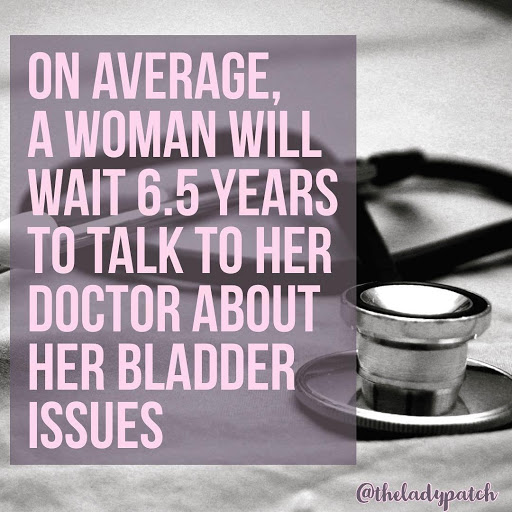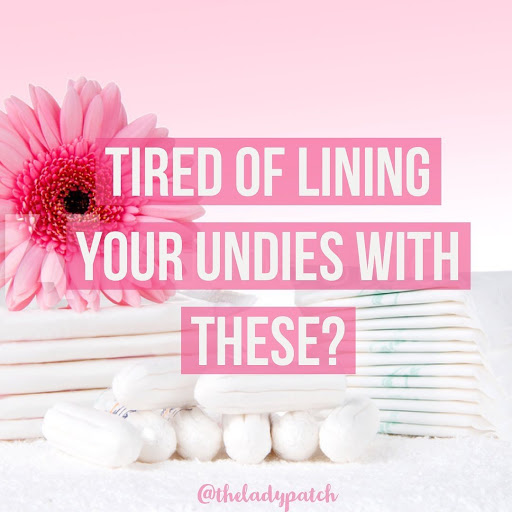If you pee when you sneeze (or laugh, or cough) read this! 9 ways to manage bladder leaks

Published Date: 07/29/19
So now you’ve just given birth to your baby. And she’s beautiful… you have fallen in love. Counted every finger and toe, studied what’s yours (her nose, her chin) and what’s daddy’s (her eyes, her hairline). It’s perfectly nostalgic. Life is utterly wonderful. You pack your bag as you prepare to leave the hospital and head home with your new bundle of joy. Diapers, wipes, breast pump, bottles, burp clothes and extra clothes for baby queen. And for you, your purse, wallet, makeup bag, mesh panty pads and don’t forget your keys! Get baby queen in the new carseat and let’s go! Daddy pulls into the driveway and helps you into the house. Time for you three to get acquainted with one another.
6 weeks have passed and it’s time for baby queen’s check up… she’s growing so perfectly! She a healthy weight and get’s her first round of shots. Her cry makes you cry.
Everyone is so hung up on baby queen (and rightfully so) but, no one’s asking how you’re doing. Your body is still adjusting to NOT growing a tiny human. Postpartum has so many aspects to it buuuuutttttt… these bladder leaks have got to go!! “Seriously body?! This is what we’re doing?!” ~this is the internal dialogue you have with yourself. Now you’re 12 weeks postpartum. You go for your check up. Everything’s starting to return back to its original state. But…you still leak. *frustrated sigh* Doctor says it’s a part of birthing children and there’s not much you can do about it. Your only options are surgery or medications. *seriously frustrated sigh* Nothing sexier than having to pee every three seconds and smelling like urine.
Ladies, did you know that if you have incontinence (leaky bladder) at 12 weeks postpartum, 92% of you will still have incontinence at 5 years!
Some common types of urinary incontinence are:
1. Stress Urinary Incontinence: when you leak urine with physical activity such as laughing, coughing, sneezing or exercise.
2. Urge Urinary Incontinence also called Overactive Bladder: a sudden, strong, uncontrollable urge to urinate.
3. Urinary Frequency: the need to urinate many times during the day.
4. Mixed Incontinence: a combination of stress incontinence and urge incontinence.
5. Nocturia: when you wake up more than one or two times a night to urinate.

We get it, it’s a taboo subject. You’re embarrassed to talk about it and will even deny that you deal with this problem on a daily basis. No one wants to admit that they have to carry an extra change of clothes just in case they have an accident or extra pads when it’s not your monthly… especially when you’re a young woman! But, you’re not alone! One out of three women leak a little pee.

On average, a woman will wait about 6 ½ years before she opens up to her doctor about her leaky bladder. We are more quick to talk about our diabetes, our arthritis, cancer, high blood pressure… but bladder leaks?? Nope! We shouldn’t feel ashamed of what we are going through, nor be embarrassed to talk about it with our health care provider. And there’s help for you, ladies.
The first step is to talk to your doctor and make sure nothing else is going on down there (eg; pelvic organ prolapse, urinary tract infection or bladder infection ~all which can cause you to leak a little pee). Once you’ve ruled everything else out and it’s just “Mom Bladder” that you’ve got, here are a list of devices and therapies available for you:
1. Pads: we’re all familiar with these. But there is a difference between incontinence pads and period pads. Period pads are designed for a more thick liquid that slowly trickles out. Incontinence pads are designed for a thinner liquid and are better equipped to deal with the untimely “gush” of pee. Both do a great job of protecting your clothes (and dignity) but don’t stop the leaks.

2. Pessary: a soft, flexible vaginal insert (kind of like a diaphragm) that presses against the vaginal wall to help lift the bladder and/or close the urethra so you don’t leak pee. You need to be fitted by your healthcare provider. It’ll help stop the leaks.
3. Pee-proof panties: these are great for added protection! There are some that even look and feel like a regular panty! With no bulky pad in the middle they do a great job of keeping you dry! But, they don’t stop the leaks or the constant urge to pee every three seconds like when you were pregnant.
4. Medications: prescribed by your doctor. Stops leaks and urges, may have side effects like dry eye, dry mouth or constipation. Some medications have been linked to dementia.
5. Vaginal probe: an over-the-counter vaginal device that stimulates the pelvic floor muscles through mild electrical impulses. Takes about ten minutes a day, is used in the privacy of your home and results are seen in a few weeks. Helps stop both leaks and urges.
6. Surgery: There are two surgical options available.
Mesh Sling: hammock like sling that lifts and supports your urethra and bladder neck.
Sacral Nerve Stimulation: an implantable/ pacemaker-like device inserted into your the base of your spine that sends mild electrical pulses to the sacral nerves (the ones that control the bladder). Helps stop leaks and urges.
It should be noted that some women have had serious side effects from surgery, as detailed in the new Netflix documentary The Bleeding Edge.
7. Urethral covering device: an over-the-counter soft, foam, squishy device that placed directly over the urethral opening stops bladder leaks only. Great for workouts!
8. Pelvic Floor Physical Therapy: a physical therapist specializing in the pelvic floor will use exercises to encourage relaxation and strengthening of the muscles of the lower pelvis. Usually you’re referred by your doctor but, you can also seek out one on your own. You’ll probably need a few sessions to get the full benefit but, it can definitely worth the time. Helps stop leaks and urges.
9. The Lady Patch: a drug-free feminine sticky patch, that’s placed directly onto the clitoris. Yikes! Yes, it sounds crazy but, don’t worry, it doesn’t hurt. Why would you place it on your clitoris, you ask? Well, the clitoris is a direct branch of the pudendal nerve. And the pudendal nerve controls bladder function. So when you place Lady Patch onto your clitoris, you stimulate the nerves throughout the pelvic floor. Which means less leaking and fewer urges to go. It’s the only over-the-counter device that’s designed to stop bladder leaks and the frequent urge to urinate. Lady Patch is available on Amazon.
Lady Patch is newly available and has a 30-day money back guarantee.
With so many options available, there's no reason to suffer with bladder leaks.
Paper Pinecone is the best resource for finding daycare and preschool programs that meet your needs. Start your free search today.
Other articles you’ll love
Dear Paper Pinecone: When should I start my preschool search?
My kid caught me smoking pot
About the author:
Cindy Santa Cruz is the founder and CEO of Lady Patch. She’s a stay-at-home mom and entrepreneur. She’s been passionate about women’s health care for years. Always looking for a more simple way to improve her own health, and sharing her findings with friends and family. Her mother is the Lady Patch inventor. When her mom told her how she was stopping her own bladder leaks, she thought it was a great way to help her fellow sisters that were needlessly dealing with the same problem in silence. Hearing the stories of the women that have been positively impacted by her work is what keeps her going.
This post may contain affiliate links
- stacey's blog
- Log in or register to post comments

